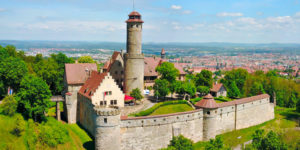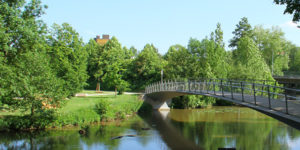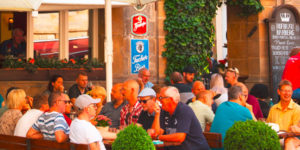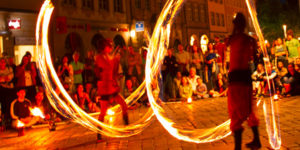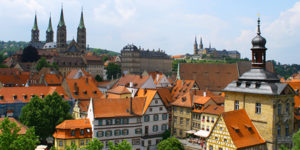18. April 2018
This gate takes its name from the nearly life-size sculpture of the biblical forefather, which receives the visitors on the right side of the portal. Next […]
18. April 2018
It stands on the territory of the settlement “papinberc”, which Emperor Otto II. gave to the Bavarian Duke Heinrich dem Zänker. The construction of the church […]
18. April 2018
The Bamberg Town Hall The baroque town hall is the hub of Maxplatz. It was built between 1732 and 1737 by Balthasar Neumann and Justus Heinrich […]
18. April 2018
The only baroque church in Bamberg St. Martin Church was built between 1686 and 1693 and has a magnificent Baroque façade, designed by Georg Dientzenhofer. He […]
18. April 2018
Towards the end of the 17th century, Prince-Bishop Lothar Franz von Schönborn decided to modernize the fountain and in 1697 commissioned the sculptor Casper Metzner to […]
18. April 2018
While the work on the building, started in 1717, could be completed in 1720, the realization of the outdoor facilities lasted until the year 1722. Until […]
18. April 2018
The Rose Garden, built in 1602, is located directly on the back of the New Residence, but was not yet used for this purpose at the […]
18. April 2018
During the early 10th century, the House of Babenberg lost a bloody feud against the Rhenish-Franconian family of the Konradines. Their property fell to the royal […]

